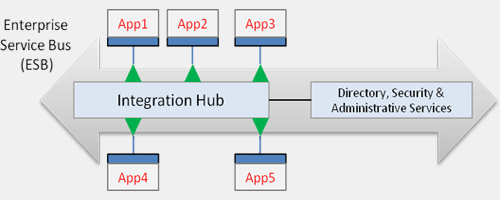|
Many large
initiatives/projects, shown above, span several
services from public and private sectors. Such
projects and initiatives need to integrate multiple
services instead of focusing on one service in one
sector. For example, a mobile health initiative may
span patient admissions, administration and clinical
services.
Service Oriented Architecture (SOA) plays a central
role in large initiatives and projects because SOA
is the best practice at present for integrating
multiple services. SPACE fully supports SOA for
enterprise application integration (EAI) within the
same sector (enterprise) or multiple sectors and
agencies (B2B).
The main idea of service oriented architectures is
that the automated applications should be thought of
in terms of the services they provide and the
individual components that actually deliver the
services. The services can be combined into
aggregate services and similar components can be
combined into applications. Thus a bank, for
example, provides a set of services (e.g., deposits,
withdrawals, fund transfers) and these services are
provided through components that can be combined
into banking applications.
Enterprise Service Bus (ESB), shown below, is a key
component of SOA and provides the main mechanism for
integrating the enterprise applications. A SOA ESB
provides a collection of technologies that allow
diverse applications to communicate with each other
through a “hub” that is supported by directory,
security and administrative capabilities. Many ESBs
are commercially available from suppliers such as
IBM, Microsoft, Oracle and others.

Space provides several
tutorials, courses and hands-on tools for SOA.
Please review the Stage 3 and Stage 4 materials in
the “Planner Learning Corner" for more details.
|



